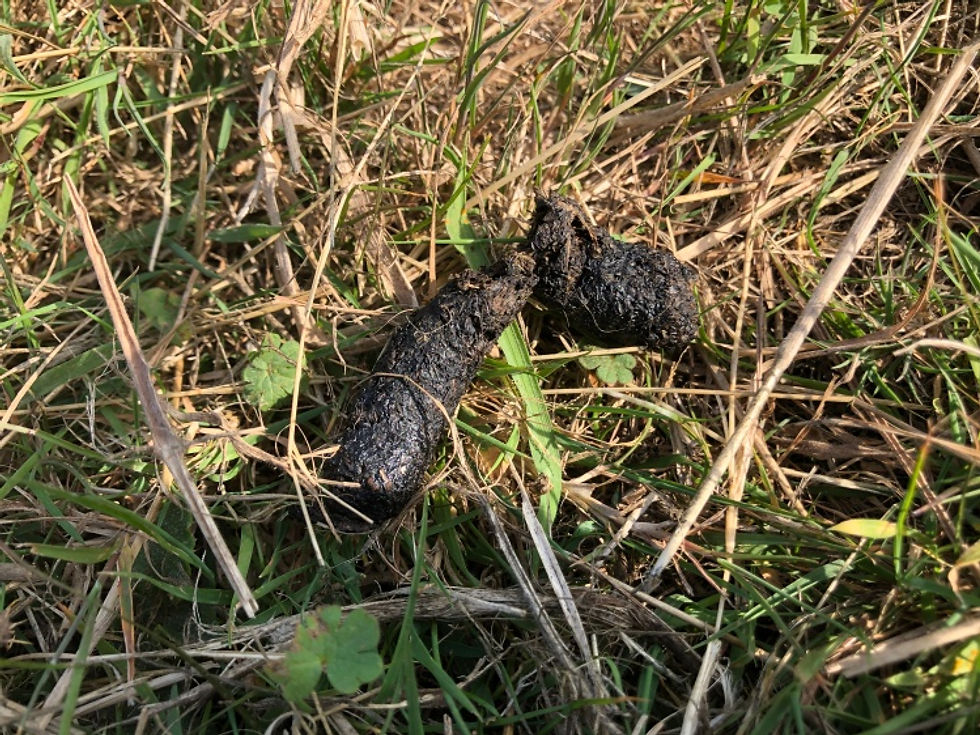Hedgehog Hunting – Part 1
- sallylouiseedge
- Oct 13, 2020
- 3 min read

Hedgehogs have declined by more than half since 2000.*
I find it hard to get my head round that. How can we have messed up SO badly in just the last 20 years that so many of these lovely creatures have gone?
Check out the info box at the bottom of the page for some of the reasons for this decline.
Since I saw the news in July this year that hedgehogs in Britain have now been classified as vulnerable to extinction on the International Red List, I’ve wondered if we have them in our garden, and what we should be doing (or not doing) to give them the best chance of thriving.
Back in the summer, when I started thinking about hedgehogs, we weren’t aware of them visiting our garden. Of course, they come out at night, so you have to be out and about after dark (and not November to March, when they’ll be hibernating) and looking around with a torch.
But you how it is, after you first become aware of something, suddenly it’s everywhere! Well, it is wasn’t the hedgehogs I was seeing everywhere, it was their poo!
New hobby – poking hedgehog poo!
I had read that hedgehog poo was black, or dark in colour, and often contained small shiny black pieces – the shells of the beetles they’d been munching on. So my new hobby became taking photos of suspected hedgehog poos and poking sticks in them – what fun! Here’s what I believe to be a hedgehog poo in the pictures. The one on the right is after I’d squished it to reveal the beetle bits.


Left – a hedgehog poo, Right – the same poo squashed to reveal black pieces of beetle shell
So, having seen lots of poos (I should probably say droppings really shouldn’t I? But I’ll stick to poo for now as it amuses me), in various parts of the garden, I’ve been thinking about setting up a feeding station, as this is one of the things suggested by wildlife conservationists to support hedgehogs, and it sounds like a fun way to get to know them better. So, Saskia and I got onto setting one up yesterday after school.
To be honest, we’re a bit late to the hedgehog party because they’ll be starting to hibernate in November, but maybe we’ll be just in time.
Making a simple hedgehog feeding station
I followed the guidance of this handy little video. The steps were:
Cut a hole 12 cm x 12 cm (5 inches) square in an upended plastic box
Tape up the sharp sides where you’ve cut
Put a container with cat or dog food inside
Position the entrance with a pile of bricks a short distance in front of it to form a sort of tunnel that other animals (e.g. dogs/cats) can’t get through.
Put a brick on top of the box to stop the wind or other animals moving it.
I also put a tray of sand in front of the food. A friend has suggested this as a way of capturing footprints to monitor visits.


Left – tray of sand, dog food in foil tray, old plastic tub with door cut out; Right – all set up, next to a pile of pavers
Yesterday we put it near the house, but no sign of any visitors this morning. We could have been patient and waited a few more nights, but the hibernation clock is against us so this afternoon we moved it to an area of the garden where I’ve spotted poos before and where there are lots of ‘messy’ areas that would be ideal hiding places for hedgehogs – the compost patch, a big pile of logs and lots of overgrowth.

New luxury hedgehog restaurant
Will they visit soon?? To be continued…
Why have hedgehogs declined?
In rural areas (decline by over half):
Use of pesticides, fertilisers and herbicides has reduced invertebrates that hedgehogs feed on
Larger fields and reduced hedgerows has made it harder for hedgehogs to move around and nest
In urban areas (decline by a third):
Garden fences and walls stop hedgehogs from moving around, which they need to do to find enough food (they usually travel 2-3 km a night)
Tidy and paved over gardens mean hedgehogs have less places to hide and nest
Pesticides kill invertebrates (hedgehog food) and slug pellets poison the hedgehogs themselves
See this Fact File from the People’s Trust for Endangered Species for more detail on these reasons.
*Statistics on decline from here






Comments